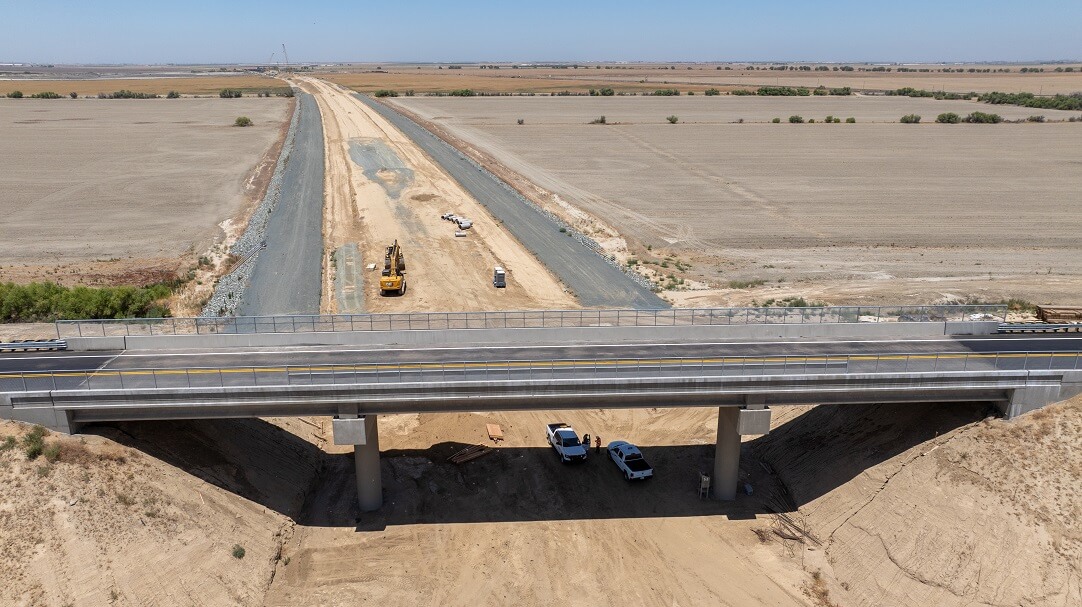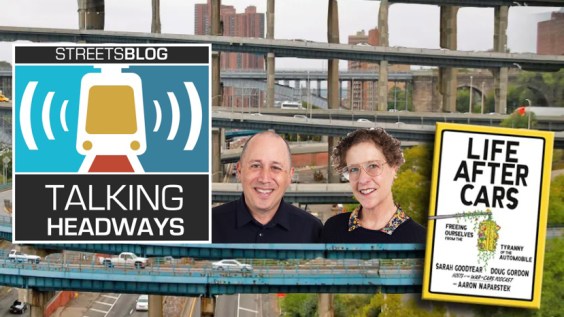Coord invites cities and other curb managers to apply for its Digital Curb Challenge to undertake a free curb management pilot program in 2020. Applications close on Feb. 14. Click here for information.
Voters who want to break car culture don’t have a stand-out advocate among presidential hopefuls — and in the absence of a champion, they’re facing some hard choices.
As the primaries roll on and the field of competitors narrows, plenty of the remaining candidates have vowed to curb transportation-related climate change, improve transportation access to housing and essential services, and even reduce deaths on American roadways. But none has voiced a strong commitment to reducing the share of vehicle miles that Americans travel in cars — the only solution that will accomplish all three of those goals at once.
Here's where the remaining hopefuls stand — and what compromises sustainable transportation advocates are making as they decide who gets their support:
Progressive silence on sidewalks
Leaving car-free transportation out of the platform might seem like a strange omission for a Democrat, at least among the candidates who lean furthest left. After all, improving access to biking, walking and transit — and making cars optional, rather than a requirement for participation in American life — is highly consistent with core progressive values. Streetsblog has long argued that reducing car usage in our cities would be instrumental to helping to achieve racial equity, reduce income inequality and protect the most vulnerable members of society.
And yet advocates argue that the candidates who most readily identify as left-of-center have some of the most disappointing policies when it comes to sustainable transportation — and progressive voters are often forced to choose other values over safe and smog-free streets.
“Unfortunately, reducing auto-dependency is something I’ve had to put to the side,” said S.J. Creek, a cycling advocate and campaign volunteer for Elizabeth Warren, who hasn’t released a comprehensive transportation plan at all — but merely seeded her housing, education and green jobs plans with nods to increasing transit, biking and walking (and even then, the Massachusetts senator hasn’t made specific commitments to funding these initiatives). She also heavily emphasizes a transition to electric vehicles in her campaign literature.
Juliet Eldred is another advocate who had to de-emphasize her fervent #BanCars beliefs when it came time to pick her candidate. But her choice may have a more visible impact that most: she’s a co-founder of New Urbanist Memes for Transit-Oriented Teens, an influential Facebook group that’s nearing 200,000 members strong. The NUMTOTS grabbed headlines last month when they offered their endorsement of Bernie Sanders; Eldred made a compelling case to multiple media outlets that the group represents a cross-section of the next generation of sustainable transportation advocates, and their perspective could have surprising pull in the coming election.
“Reducing vehicle miles traveled by car is a personal concern of mine, yeah,” Eldred said. “The housing and transit portions of [Sanders’s] policies make it seem like he wants to make that easier, but it doesn’t seem like reducing VMT was really addressed directly in those policies. But I do think it’s something he could be pressured on. He could be teachable.”
Whether or not he’ll be teachable tomorrow, Sanders’s transportation plan as it stands today makes no explicit mention of reducing car dependency or ending roadway carnage. He does make the strongest funding promises for transit of any candidate in the race — he’s committing $300 billion for public transportation, and a further $607 billion for regional high-speed rail — but doesn’t mention more humble solutions, like sidewalks. And the lion’s share of his transportation package is devoted to cars, including $85.6 billion for electric vehicle charging infrastructure, $2.09 trillion for drivers who trade in their gas-powered cars for EVs, and $75 billion to stabilize the Highway Trust Fund — an amount that his policy advisors say will largely be restricted to maintenance.
The Sanders campaign is urging voters who are looking for a stronger commitment to sustainable transportation to read between the lines.
“Bernie strongly supports the goal of Vision Zero and will work to reach it as President,” said Rosemary Boeglin, a spokeswoman for the campaign. “For too long, government policy has encouraged long car commutes, congestion, and dangerous emissions. Bernie will reverse these trends and create more livable, connected, and vibrant communities.”
It’s challenging to see how, exactly, spending big on transit and autocentric infrastructure (with nothing specific promised to cyclists and walkers) will reverse decades of near-exclusive car-only planning. But voters who see reducing car dependency as just one plank of a larger progressive project are crossing their fingers that all those new trains will naturally encourage Americans to go car-free. We’ll see if they’re right.
Mixed messages from the center
Even the most plugged-in voters might be surprised by who is making the most visible commitments to ending autosupremacy: the centrist Democrats in the race. The only problem? None is committing to robustly funding those commitments.
We gave kudos to former South Bend Mayor Pete Buttigieg last month for being the first candidate willing to say the words “Vision Zero” in his transportation plan — and especially for his visionary idea to make federal roadway funding contingent upon states reducing roadway deaths. The Hoosier is also making what might seem like big promises to expand transit … until you remember that his promised $150 billion for urban public transportation is exactly half of what Sanders is committing. And Buttigieg is actually worse than the Vermont senator when it comes to promising money to drivers: he wants to inject $165 billion into the Highway Trust Fund, more than twice Sanders’s commitment.
The other ex-mayor in the race, Mike Bloomberg, got a strong review from us as well for his unique focus on Complete Streets policies. He’s also the only candidate who’s set a specific target for how many lives his policies will save on roadways during his first term: an astounding 20,000 by 2025, which would represent 55 percent reduction from today. But how the New York billionaire would accomplish his was vague: he pledged to “triple” funding for bike and pedestrian infrastructure, but considering that those funds are currently close to zero, the promise doesn’t mean much.
Vice President Joe Biden also name-checked the Complete Streets movement in his plans, but didn’t commit a specific dollar amount to it; Transportation for America characterized the remainder of his plan as “business-as-usual” policy that overemphasizes car infrastructure and underemphasizes state and local accountability.
Amy Klobuchar may have the worst plan of the remaining candidates who are still considered viable by pollsters; she’s committing a vague $650 billion for “infrastructure,” but doesn’t spell out how that pot of money will be divided between green and dirty transportation, much less truly green modes like biking, walking and transit, versus green-ish solutions, like electric cars.
Are the centrist candidates' use of terms like “Vision Zero” and “Complete Streets” a signal that they’re on the side of reining in cars, or are these just buzzwords designed to let politicians play lip service to advocates while pushing through policies that do little to reduce automobiles? Either way, it’s not great news for the cause.
Can any president end car-dependency?
The question car-free advocates need to ask themselves when they head to the polls may not be as straightforward as who to vote for. It may be whether any president can make meaningful progress on ending auto-dependency — at least in our current political climate.
As long as Americans believe it’s the mandate of the president to grow the U.S. economy — and to be clear, they do — residents of the White House will favor policies that expand our gross domestic product by any means necessary. And for the past 70 plus years, the clearest path to a national economic boom has been to rigorously support the auto-industrial complex.
Fuels, including oil, were the number two U.S. export last year; vehicles, including cars, were number five. Building infrastructure for cars has been giving regular windfalls to municipalities since the advent of the federal highway system, which is why building more of it seems to be the only thing Democrats and Republicans can consistently agree upon. It is telling — but not surprising — that even the most climate-conscious candidates in the 2020 race have largely focused their efforts on building more stuff — even if a lot of that stuff is ostensibly greener.
When it comes to really fixing federal transportation policy, there’s a really tough problem to solve: finding a way to make a candidate who wants to spend less on transportation not just politically tenable, but politically necessary. A transportation landscape centered around biking, walking and transit wouldn’t grow the national economy in the short term – but it would save our planet, and countless lives, in the long run. Hopefully, by 2024, we can have a real conversation about why that’s a good thing.






